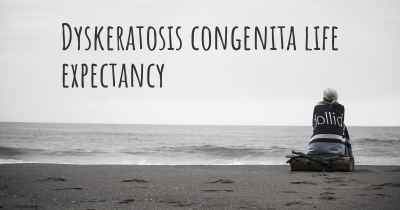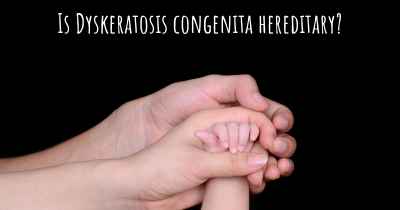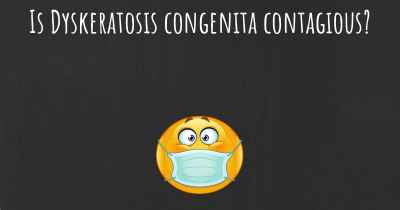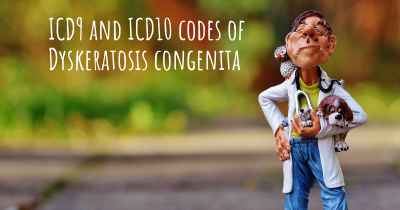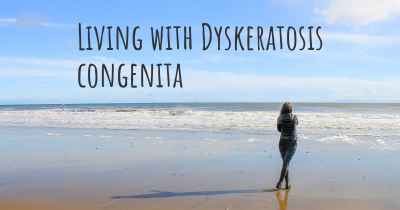How is Dyskeratosis congenita diagnosed?
See how Dyskeratosis congenita is diagnosed. Which specialists are essential to meet, what tests are needed and other useful information for the diagnosis of Dyskeratosis congenita
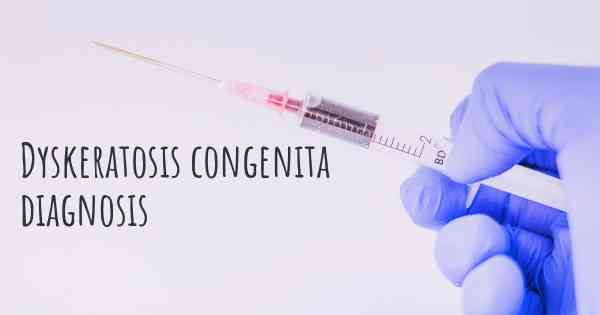
Diagnosing Dyskeratosis Congenita
Dyskeratosis congenita (DC) is a rare genetic disorder that affects multiple systems in the body, including the skin, nails, and bone marrow. It is characterized by a triad of clinical features: abnormal skin pigmentation, nail dystrophy, and oral leukoplakia. However, the diagnosis of DC can be challenging due to its variable presentation and overlap with other conditions. To accurately diagnose DC, a comprehensive evaluation is required, involving a combination of clinical assessment, laboratory tests, and genetic analysis.
Clinical Assessment
The initial step in diagnosing DC involves a thorough clinical assessment by a healthcare professional experienced in the disorder. The presence of the classic triad of skin pigmentation abnormalities, nail dystrophy, and oral leukoplakia raises suspicion for DC. However, it is important to note that not all individuals with DC exhibit all three features, and some may only present with one or two of them. Therefore, a high index of suspicion is necessary to avoid misdiagnosis.
Laboratory Tests
Laboratory tests play a crucial role in the diagnosis of DC. These tests help evaluate the underlying cellular and molecular abnormalities associated with the disorder. The following laboratory investigations are commonly performed:
- Complete Blood Count (CBC): DC often leads to bone marrow failure, resulting in low blood cell counts. A CBC can reveal low levels of red blood cells (anemia), white blood cells (leukopenia), and platelets (thrombocytopenia).
- Telomere Length Measurement: Telomeres are protective caps at the ends of chromosomes that shorten with each cell division. In DC, telomeres are abnormally short. Telomere length measurement using specialized techniques, such as quantitative polymerase chain reaction (qPCR), can help confirm the diagnosis.
- Flow Cytometry: Flow cytometry is used to assess the presence of specific cell populations in the bone marrow. In DC, there is often a decrease in hematopoietic stem cells and an increase in myeloid cells. Flow cytometry can aid in evaluating these abnormalities.
- High-resolution Karyotype: A karyotype analysis examines the structure and number of chromosomes in a person's cells. DC can be associated with certain chromosomal abnormalities, such as trisomy 8 or monosomy 7. A high-resolution karyotype can help identify these abnormalities.
- Bone Marrow Biopsy: A bone marrow biopsy involves the removal of a small sample of bone marrow for examination under a microscope. It helps assess the cellular composition of the bone marrow and can reveal abnormalities associated with DC, such as hypocellular marrow or dysplastic changes.
Genetic Analysis
Genetic analysis is essential for confirming the diagnosis of DC and identifying the specific genetic mutation responsible for the disorder. DC is primarily caused by mutations in genes associated with telomere maintenance, such as DKC1, TERC, TERT, and TINF2. Genetic testing can be performed using various techniques, including:
- Sanger Sequencing: Sanger sequencing is a traditional method used to analyze individual genes. It involves sequencing specific regions of the genes associated with DC to identify mutations.
- Next-Generation Sequencing (NGS): NGS is a more advanced technique that allows for the simultaneous analysis of multiple genes associated with DC. It provides a comprehensive genetic profile and can identify mutations in known DC-associated genes as well as novel gene variants.
- Whole Exome Sequencing (WES): WES involves sequencing the protein-coding regions of all genes in an individual's genome. It can help identify mutations in genes not typically associated with DC, expanding our understanding of the genetic basis of the disorder.
Additional Evaluations
While clinical assessment, laboratory tests, and genetic analysis are the primary methods for diagnosing DC, additional evaluations may be necessary to assess the extent of organ involvement and associated complications. These may include:
- Dermatological Examination: A dermatologist may examine the skin in detail to identify any additional skin abnormalities or features suggestive of DC.
- Ophthalmological Evaluation: An ophthalmologist may assess the eyes for ocular abnormalities commonly seen in DC, such as conjunctival telangiectasia, cataracts, or retinal changes.
- Gastrointestinal Assessment: Gastrointestinal complications, such as esophageal strictures or liver abnormalities, can occur in DC. Evaluation by a gastroenterologist may be necessary to identify and manage these issues.
- Immunological Testing: DC can be associated with immune system dysfunction. Immunological testing, including assessment of immunoglobulin levels and lymphocyte subsets, can help evaluate immune function.
Conclusion
Diagnosing Dyskeratosis congenita requires a multidisciplinary approach involving clinical assessment, laboratory tests, and genetic analysis. The combination of the classic triad of clinical features, abnormal laboratory findings (such as low blood cell counts and short telomeres), and identification of specific genetic mutations confirms the diagnosis. It is important to consult with healthcare professionals experienced in DC to ensure accurate diagnosis and appropriate management of this complex disorder.
